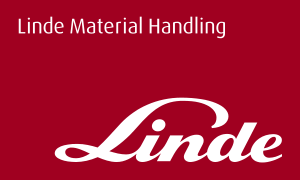Keeping a close eye on valuable air cargo
24-Feb-2017
Linde Material Handling delivers the first Roadster models to Frankfurt Cargo Services (FCS)
Linde Material Handling launched a revolutionary vehicle concept last year with its Roadster concept for electric counterbalanced trucks. Designed without the A-pillar on the left and right, it offers the driver a comprehensive field of view of the driving path environment and the load. From the very beginning, the logistics managers of Frankfurt Cargo Services GmbH (FCS) were enthusiastic about the new design. About three years ago, the freight logisticians had tested a prototype over a period of several months, which received much praise from the workforce. Following that, FCS was the first customer to be supplied with the first serial production trucks: A total of six Roadster trucks with a load capacity of three tonnes and 6-meter standard mast have been providing valuable services at the airport since the end of last year, especially in the tricky loading of air freight pallets. Representatives of FCS, Linde and Suffel-Fördertechnik recently met for the official handover in CargoCity South at Frankfurt airport.
“Some of my colleagues at FCS first saw the Linde Roadster at a trade show and immediately realized that the open design is an optimal solution for us,” says Steffen Kuhn, Head of Infrastructure, Quality and Project Management at FCS. “Pilot testing was extremely positive. All the drivers who worked with the truck during these six months were impressed. So it was quite clear that we would order them as soon as they went into series production,” Kuhn continues. The loading of air freight pallets is especially challenging. “This task is comparable to a three-dimensional puzzle. The driver must stack the various boxes and packages on top of one another with the utmost care and millimetre precision.”
“The city that never sleeps” is a nickname that actually refers to New York, but it fits equally well to describe CargoCity South at Frankfurt Airport. Work in the 54,000-square-metre FCS freight sheds, located within sight of the southern runways, goes on 24/7, 365 days a year. Peak periods are in particular the times before and on the weekends. More than 170 electric counterbalanced trucks and tow trucks transport a wide range of goods and freight, ranging from express deliveries spare parts and exclusive race cars to urgently needed pharmaceuticals, between the collection points, racking systems and truck loading ramps. FCS, a member of Worldwide Flight Services (WFS) and Fraport AG, operates as an independent service provider for around 40 international airlines.
The air cargo business is dominated by two special types of load carriers: aircraft pallets and containers. Aircraft pallets are made of sheet aluminium and have a substructure to which the cargo netting is fastened. Depending on the type of aircraft, they can have different dimensions, the largest pallets are more than three metres wide and nearly 2.50 metres long. They are loaded with the help of industrial trucks in the FCS export area. Crucial for ensuring safety during the flight is that the weight, height, width and depth specifications according to the IATA standard are strictly adhered to.
“The correct loading of the aircraft pallets is extremely important for the airlines as it ensures that nothing can slip and gets damaged in the aircraft cargo hold,” explains Oliver Pschorn, Industrial Truck Manager at FCS. “Normally, we therefore need a freight assistant on site to help the truck driver. With the Linde Roadster, in many cases this is no longer necessary as the driver has such an excellent view. This saves us time and money that we can now use elsewhere.”
With the Roadster, Linde has a unique selling point that cannot readily be copied by any other manufacturer. As Daniel Butte, Head of Product Management Forklift Trucks at Linde, explains, the design is based on the overhead tilt cylinders of the Linde counterbalanced forklift trucks. These absorb the forces acting on the mast during operation and direct them backwards via the overhead guard frame.

